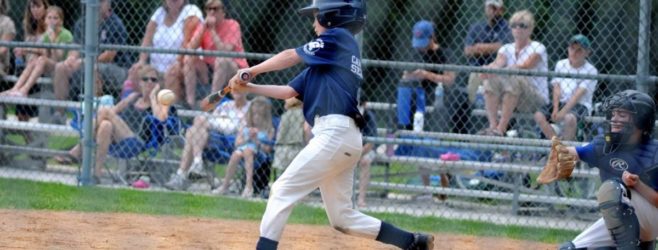Many children with cerebral palsy have some level of difficulty with coordination and movement. However, that doesn’t mean children with cerebral palsy can’t remain active.
Staying active is important for children with cerebral palsy because it allows them to bond with other children, and it is positive for both their physical and mental health.
Since the condition limits movement, children may be limited in which activities they can pursue. Fortunately, there are a number of programs and activities tailored towards those with cerebral palsy and other disabilities in which families can participate.
Ways Children With Cerebral Palsy Can Stay Active
There are a plethora of activities available to help children with cerebral palsy stay active. The growth of adaptive sports has made it easier for families to find activities that fit their child’s interests and physical abilities. There are also dance and physical therapy options.
Cerebral Palsy and Sports
Athletes with cerebral palsy can still compete at a high level through adaptive sports. Adaptive sports allow individuals with disabilities to participate in the sports they enjoy by providing physical assistance when necessary.
Examples of sports that children with cerebral palsy can participate in include:
- Basketball
- Baseball
- Swimming
- Running
Basketball is one of the most popular sports for children using assistive devices. Wheelchair basketball has become a staple of cerebral palsy athletics programs. Additionally, swimming is an example of a sport where assistive devices may not be necessary because water limits the risk of injury.
In some cases, children with cerebral palsy may be able to participate on sports teams with able-bodied peers. Families should consult with coaches and medical professionals to determine if this is a possibility.
Cerebral Palsy Dance Therapy
Cerebral palsy dance therapy allows children to fully express themselves without limitations. Dance programs are typically very accommodating of children with cerebral palsy regardless of their aptitude for coordination or movement.
There are several prominent examples of dancers with cerebral palsy. For example, Buffalo News has chronicled how Lauren Walier has traveled on the international ballroom circuit, dancing with Mayo Alanen, a former contestant on Dancing with the Stars.
There is a rich culture surrounding cerebral palsy dance therapy, and there is no reason that children suffering from cerebral palsy can’t participate in dance.
Cerebral Palsy Physical Therapy
Physical therapy is a clinical practice that is used to improve muscle strength, flexibility, range of motion, and reduce pain.
The benefits of physical therapy for those with cerebral palsy are plentiful:
- Improved balance and coordination
- Improved flexibility
- Improved breathing
- Improved reflexes
- Increased ability to be independent
Physical therapy is administered by qualified and licensed physical therapists. Families can access physical therapy by reaching out to physical therapists or disability organizations in their area, preferably those who specialize in cerebral palsy therapy.
Other Cerebral Palsy Athletic Options
In addition to physical therapy and dance, children with cerebral palsy have many other options to help them keep active and feel independent.
Other cerebral palsy athletic options include:
- Skateboarding
- Equine therapy (horseback riding)
- Frame football (soccer)
In frame football, walking equipment such as a frame or walker is used as an assistive device. Assistive devices may also help cerebral palsy athletes with skateboarding.
Equine therapy, or horseback riding, is another great option for children with cerebral palsy. Equine therapy often involves having side walkers who walk next to the horse to ensure the safety of the rider.
Examples of Cerebral Palsy Athletes
Athletes with cerebral palsy are becoming increasingly visible and participating in sports ranging from skateboarding to cross country.
There are several prominent examples of cerebral palsy athletes who have become well-known for their accomplishments.
Some of the most famous athletes with cerebral palsy include:
- Justin Gallegos: This University of Oregon student became the first athlete to sign a deal with Nike. In 2016, he competed in the California State Track & Field Championships’ Paralympics-Ambulatory division and won gold in the 400 meters competition.
- Kyle and Brent Pease: Brent (who is able-bodied) and Kyle (who has spastic quadriplegic cerebral palsy) have competed in the Ironman competition and started a non-profit to help others. The brothers have together competed in over twenty-five 5K runs, half-marathons, and half-Ironman events.
- Jerron Herman: Despite a poor prognosis from doctors, Jerron defied the odds and became a professional dancer. Herman does a lot of cross-training and swimming to keep his body flexible for dancing. Today, Herman works with the Heidi Latsky Dance Company as a full-time dancer.
Encouraging Children With Cerebral Palsy to Stay Active
Children with cerebral palsy can — and should — participate in activities that help them stay active, interact with peers, and increase their independence.
Disability organizations and local health programs may be able to help your family find local adaptive sports that your child can participate in. Cerebral palsy athletes like Justin Gallegos and Jerron Herman have inspired millions of people around the world with their skill and drive.
Children and athletes with cerebral palsy can improve their balance and flexibility, while reducing pain, by exercising consistently. Check with your family doctor to see which sports may best fit your child’s needs.



